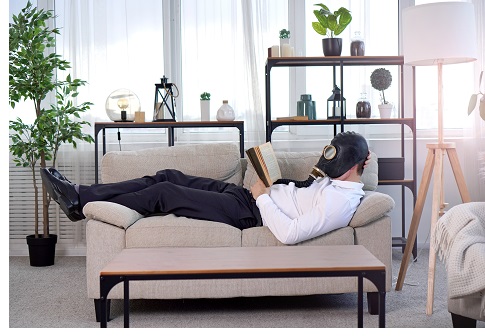COVID’s Quarantine: An Opportunity That You’d Never Ask For
May 14, 2020
 “No one ever promised you this life was going to be easy.” Those are the eternal words of my late grandmother, Kathleen Olsen. A wonderful woman, she was shrewd and realistic. If you called with a report that all was well, she’d respond with a, “Well, just wait.”
“No one ever promised you this life was going to be easy.” Those are the eternal words of my late grandmother, Kathleen Olsen. A wonderful woman, she was shrewd and realistic. If you called with a report that all was well, she’d respond with a, “Well, just wait.”
So, now the entire country is facing stay-at-home orders, which at first glance for many is tantamount to a glorified house arrest. As we adapt to life at home and begin to create more concerted routines, I’m recalling the many times I’ve said, “If I just had a bit more time for exercise and family.” We now have to play the hand we are dealt, and looking at this quarantine from a slightly altered perspective, many of us have the ironic opportunity to focus on health and longevity during this pandemic.
Last month a study of 4,080 adults taken from the National Health and Nutrition Examination Survey attached sound data to the anecdotal mantra, get your 10,000 steps a day.
Pedro Saint-Maurice, PhD, and colleagues found an exponential decrease in mortality from 2,000 through 12,000 steps per day. As compared to 4,000, those getting 8,000 steps had about half the risk of mortality over the 10-year study period, and those obtaining 12,000 steps per day had a 65% decreased risk of dying. Eight thousand steps a day is a very reasonable goal, bestowing striking longevity benefits across all ages, genders, and races. In regard to those over 65, the difference between 4,000 and 8,000 steps a day was a 62% risk reduction in mortality over the span of a decade.
For many, achieving this benchmark would entail only minor changes to their daily routine, and in an era where few people don’t have smartphones, tracking your steps has tangible value. In my opinion, the most foolproof method to consistently achieving this goal is welcoming a dog into the home, and if there was ever a time to raise a puppy—this is the moment.
Owning a dog is known to increase physical activity and exposure to the outdoors, both of which are strong predictors of overall well-being. Dogs, too, are a strong source of companionship and such interconnectedness is a major health determinant to the extent that single-person households with a dog have a 33% decreased risk of mortality and improved survival after a heart attack.
Another recent study showed that people who routinely spend more time in “green spaces” (areas with natural vegetation such as urban parks and public open spaces, as well as streets lined with trees and greenery) have risk reductions of 28% for Type 2 diabetes and 31% for all-cause mortality. Moreover, dogs, physical activity, and time spent outdoors are all known to decrease psychosocial stress, and if your family is anything resembling mine, having outlets to defuse tension during a mandated quarantine is not just important, it’s a necessity.
This is an especially trying time for those affected by COVID-19 and all the essential personnel who are out on the front lines tasked with ensuring our besieged cities remain operational for the coming weeks to months, all the while bracing for a possible roaring second wave of infections. For these groups, we extend our hats and hearts, for their struggles right now are no small burden to carry, but this too shall pass.
In Good Health,
Evan L. O’Keefe, MD





